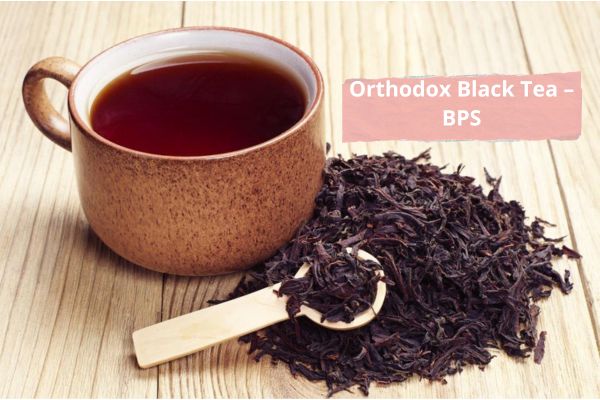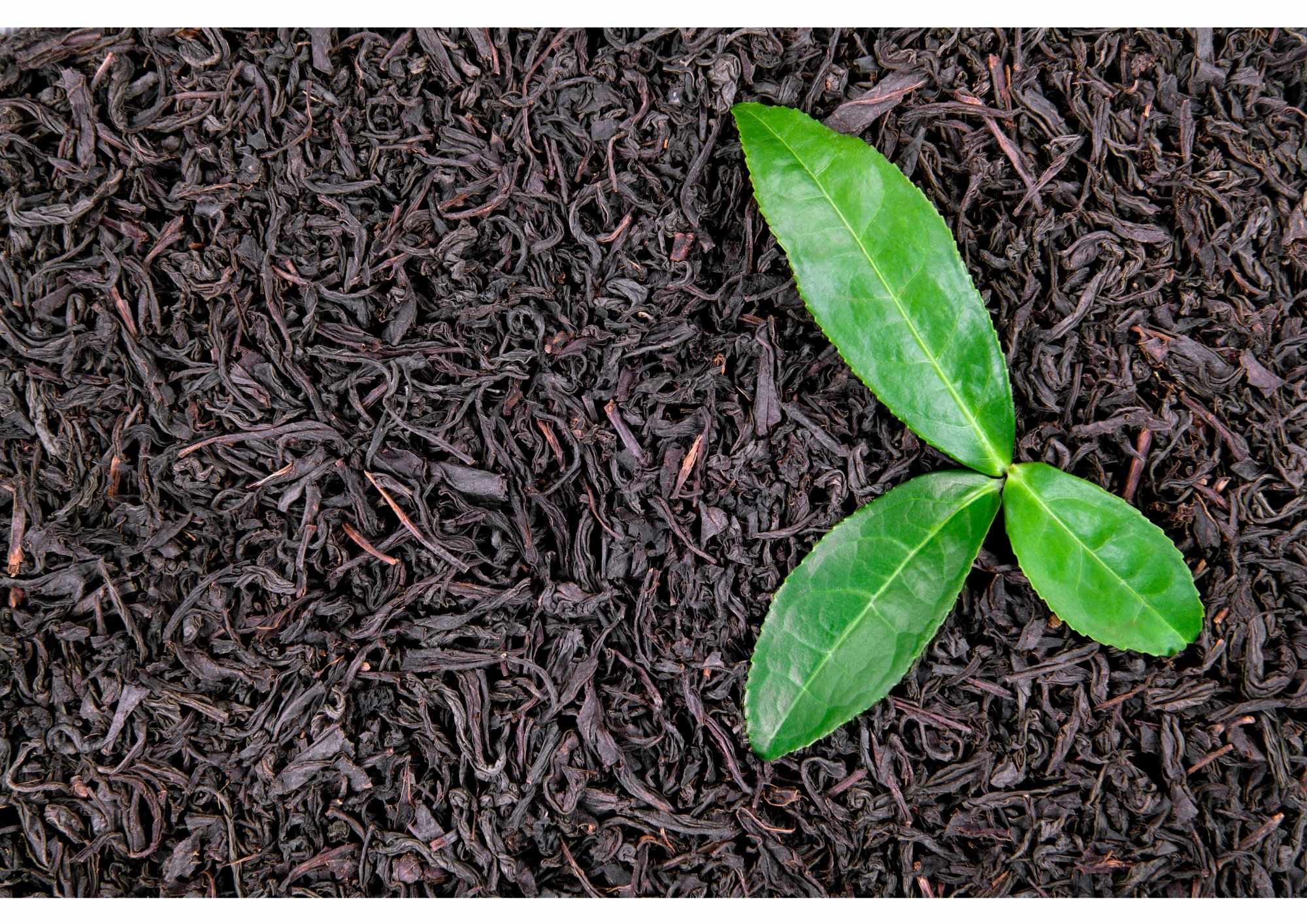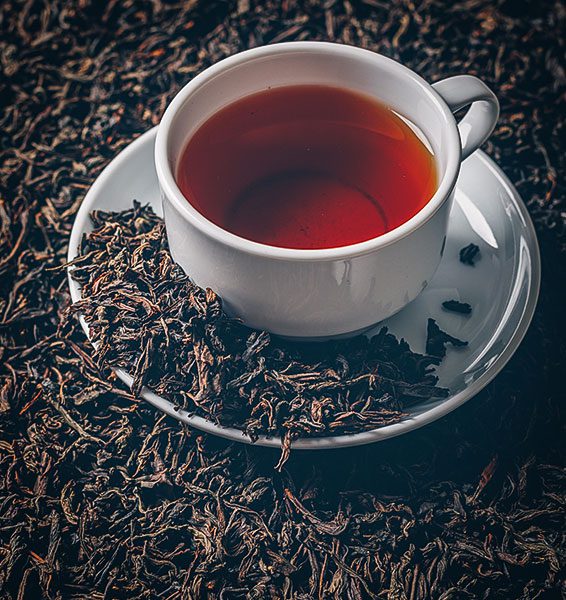Tin tức
Orthodox Black Tea – BPS: Characteristics, Flavor and How to Enjoy It
Orthodox Black Tea – BPS (Broken Pekoe Souchong) is a unique type of tea characterized by its broken leaves, offering a robust flavor profile and distinct benefits. This article explores the production process, health advantages, and various ways to enjoy this exceptional tea.

Contents
- 1 Introduction to Orthodox Black Tea – BPS
- 2 The Production Process of Orthodox Black Tea – BPS
- 3 Characteristics and Flavor Profile of Orthodox Black Tea – BPS
- 4 Comparing Orthodox Black Tea – BPS with Other Orthodox Tea Varieties
- 5 Health Benefits of Orthodox Black Tea – BPS
- 6 How to Brew Orthodox Black Tea – BPS for Optimal Flavor
- 7 Why Choose Orthodox Black Tea – BPS? Selection Criteria and Preservation Tips
- 8 Exploring Creative Uses of Orthodox Black Tea – BPS in Culinary and Beverage Innovations
Introduction to Orthodox Black Tea – BPS
Orthodox Black Tea is celebrated for its traditional, carefully controlled production methods, which preserve the natural qualities and rich flavors of the tea leaves. Within this category, BPS (Broken Pekoe Souchong) stands out due to its unique preparation involving broken leaves that deliver a strong, full-bodied flavor.
In this article, we will delve into the world of Orthodox Black Tea – BPS, exploring its production process, distinctive characteristics, health benefits, and the best ways to brew and enjoy it. Whether you are a seasoned tea drinker or new to the world of tea, BPS offers a compelling experience that is worth discovering.
The Production Process of Orthodox Black Tea – BPS
Understanding the production process of Orthodox Black Tea – BPS is essential to appreciating its unique qualities. The meticulous steps involved ensure that the tea maintains its strong flavor and high quality.
Harvesting and Leaf Selection
The journey of BPS begins in the tea gardens, where skilled tea pickers carefully select the leaves. The selection process is crucial, as only the best leaves are chosen to produce high-quality BPS. These leaves are usually broken during processing, but this is intentional, as it enhances the tea’s ability to infuse quickly and release its flavors.
Key Processing Steps
After harvesting, the leaves undergo several key processes:
- Withering: The leaves are first spread out to wither, reducing their moisture content and making them more pliable for the next stages.
- Rolling: The withered leaves are then rolled to break their cell walls, releasing essential oils that will define the tea’s flavor. This process also breaks the leaves, creating the distinct BPS particles.
- Oxidation: During this step, the leaves are exposed to air, allowing them to oxidize. This process deepens the color of the leaves and develops the rich flavors characteristic of black tea.
- Drying: Finally, the leaves are dried to halt oxidation and preserve the tea. This step ensures that the tea is stable and can be stored without losing its flavor.
Sorting and Packaging BPS
Once the tea leaves have been processed, they are sorted by size and quality. BPS is classified based on the size of the broken leaves, which are smaller than whole leaves but larger than fannings. This specific grade is ideal for those who enjoy a strong cup of tea with a quick infusion time. After sorting, the tea is carefully packaged to preserve its freshness and flavor.

Characteristics and Flavor Profile of Orthodox Black Tea – BPS
To truly appreciate Orthodox Black Tea – BPS, it is important to understand its characteristics and flavor profile. This tea offers a distinctive taste experience that sets it apart from other varieties.
Physical Characteristics of BPS
BPS (Broken Pekoe Souchong) is recognized by its smaller, broken leaf particles, which result from the rolling and processing stages. These broken leaves allow for a faster infusion, releasing more flavor into the water in a shorter time. This makes BPS a popular choice for those who prefer a strong, brisk tea that doesn’t require a long brewing time.
Flavor and Aroma
When brewed, Orthodox Black Tea – BPS produces a bold and robust flavor with a slightly astringent edge. The broken leaves create a tea that is full-bodied, with a deep, malty taste that is both invigorating and satisfying. The aroma is equally rich, with notes of earthiness and a hint of smokiness that lingers in the background, making each sip a delightful experience.
Advantages of BPS Over Other Tea Grades
One of the key advantages of BPS is its ability to deliver a strong flavor quickly, making it ideal for those who want a powerful cup of tea in a short time. Compared to whole leaf teas, BPS infuses faster and often has a more intense flavor, making it a favorite for those who enjoy a bold tea. Its versatility also allows it to be used in a variety of ways, from traditional hot brews to iced teas and even culinary applications.
Comparing Orthodox Black Tea – BPS with Other Orthodox Tea Varieties
When choosing between different types of Orthodox Black Tea, it’s important to understand how BPS compares to other varieties like STALK, Fannings, and OP (Orange Pekoe). Each type has its unique characteristics, making them suitable for different preferences and uses.
Comparison of Production Processes
The production process of BPS involves more aggressive handling of the leaves, which results in the broken leaf particles that define this tea. In contrast, varieties like STALK include stem fragments, while Fannings consist of even smaller particles, and OP (Orange Pekoe) features whole leaves or slightly broken ones. These differences in processing lead to distinct flavor profiles and brewing times.
Flavor and Aroma Differences
Orthodox Black Tea – BPS is known for its strong, robust flavor with a slightly astringent finish, making it ideal for those who enjoy a potent tea. In comparison, STALK offers a more earthy, woody flavor due to the inclusion of stems, while Fannings provide a quick, sharp brew that is often used in tea bags. OP (Orange Pekoe), on the other hand, tends to have a smoother, milder taste with more subtle nuances.
Choosing the Right Tea for You
When deciding between BPS and other varieties, consider what you value most in your tea. If you prefer a quick, strong brew, BPS is an excellent choice. For a more nuanced flavor with a balance of smoothness and strength, you might prefer OP (Orange Pekoe). STALK and Fannings also offer unique experiences, with STALK providing a robust, earthy profile and Fannings delivering a brisk, intense flavor.

Health Benefits of Orthodox Black Tea – BPS
Beyond its rich flavor, Orthodox Black Tea – BPS also offers several health benefits that make it a valuable addition to your diet.
Antioxidants in BPS
One of the key health benefits of BPS is its high antioxidant content. The tea is rich in polyphenols and catechins, which are powerful antioxidants that help protect the body from oxidative stress. These compounds can reduce the risk of chronic diseases, including heart disease and certain types of cancer, by neutralizing free radicals that can damage cells.
Digestive Health Support
Drinking Orthodox Black Tea – BPS can also support digestive health. The tannins in the tea have a soothing effect on the digestive tract, helping to reduce symptoms of indigestion and nausea. Additionally, BPS can promote healthy digestion by supporting the growth of beneficial gut bacteria, making it a great choice for those looking to improve their overall digestive wellness.
Caffeine and Energy Boost
Orthodox Black Tea – BPS contains a moderate amount of caffeine, which provides a natural energy boost. The caffeine content in BPS helps improve focus and concentration without the jittery effects often associated with coffee. This makes it an ideal beverage for those looking to stay alert and energized throughout the day.
How to Brew Orthodox Black Tea – BPS for Optimal Flavor
To get the most out of your Orthodox Black Tea – BPS, it’s important to brew it correctly. The right brewing technique will enhance the tea’s natural flavors and ensure a satisfying cup.
Preparation Essentials
Before brewing, gather the necessary tools:
- A quality teapot or tea infuser
- Fresh, filtered water
- Measuring spoon
- A timer
Detailed Brewing Steps
- Measure the Tea: Use about 1 teaspoon of BPS per cup of water.
- Heat the Water: Bring fresh water to a boil (approximately 95-100°C).
- Infuse the Tea: Pour the boiling water over the BPS and let it steep for 3-5 minutes. The broken leaves of BPS will infuse quickly, releasing their bold flavors into the water.
- Serve and Enjoy: Once the steeping time is complete, strain the tea into a cup and enjoy it plain or with a touch of milk or honey.
Flavor Variations
Orthodox Black Tea – BPS is versatile and can be enjoyed in several ways:
- Add Milk: For a creamier texture, add a splash of milk.
- Sweeteners: A touch of honey or sugar can balance the tea’s natural astringency.
- Herbal Infusions: Consider adding a slice of lemon or a sprig of mint to enhance the tea’s flavor profile.

Why Choose Orthodox Black Tea – BPS? Selection Criteria and Preservation Tips
When it comes to choosing the right tea, Orthodox Black Tea – BPS is a standout option. But what makes it so special, and how can you ensure you’re getting the best quality?
Reasons to Choose BPS
Choosing Orthodox Black Tea – BPS means opting for a tea that delivers a strong, robust flavor quickly. Its unique broken leaf form allows for a quick infusion, making it ideal for those who enjoy a bold cup of tea. Additionally, the traditional Orthodox processing method ensures that BPS is crafted with care, preserving its natural qualities.
Criteria for Selecting Quality BPS
When purchasing BPS, consider the following factors:
- Freshness: Ensure the tea is fresh and hasn’t been sitting on the shelf for too long.
- Packaging: Look for tea that is packaged in airtight containers to preserve its flavor and aroma.
- Origin: Choose BPS from reputable sources that are known for high-quality tea production.
How to Preserve BPS
To maintain the quality of your Orthodox Black Tea – BPS, proper storage is essential. Keep the tea in an airtight container, away from light, moisture, and strong odors. This will help preserve the tea’s flavor and extend its shelf life, ensuring that every cup you brew is as good as the first.
Exploring Creative Uses of Orthodox Black Tea – BPS in Culinary and Beverage Innovations
Orthodox Black Tea – BPS isn’t just for drinking—it can also be used in creative ways in the kitchen and beyond.
BPS in Culinary Applications
BPS can be incorporated into a variety of dishes to add a rich, malty flavor. For instance, you can use it as a base for tea-infused desserts like tea cakes, ice cream, or even panna cotta. The robust flavor of BPS also pairs well with savory dishes, such as using brewed BPS to marinate meats or as a broth base for soups and stews.
Modern Beverage Creations with BPS
In the world of modern beverages, Orthodox Black Tea – BPS can be used to create unique drinks beyond the traditional cup of tea. Try using BPS to make a refreshing iced tea or blend it with fruits and herbs for a creative twist. BPS can also be a great base for cocktails or mocktails, offering a deep flavor that complements a variety of ingredients.
Creative Recipes to Try at Home
Here are a few simple yet creative recipes using BPS:
- BPS Iced Tea: Brew a strong pot of BPS, chill it, and serve over ice with a slice of lemon and a sprig of mint.
- BPS-Infused Milk: Brew BPS in warm milk for a rich, comforting drink, perfect for an evening treat.
- Tea-Infused Desserts: Incorporate BPS into your favorite dessert recipes for a unique, tea-infused twist.
This comprehensive guide to Orthodox Black Tea – BPS provides an in-depth look at everything you need to know about this unique tea. From its meticulous production process to its health benefits and creative uses, BPS offers a rich and rewarding experience for tea lovers. Whether you’re new to Orthodox teas or a seasoned drinker, BPS is a must-try for anyone looking to explore the diverse world of black tea.
